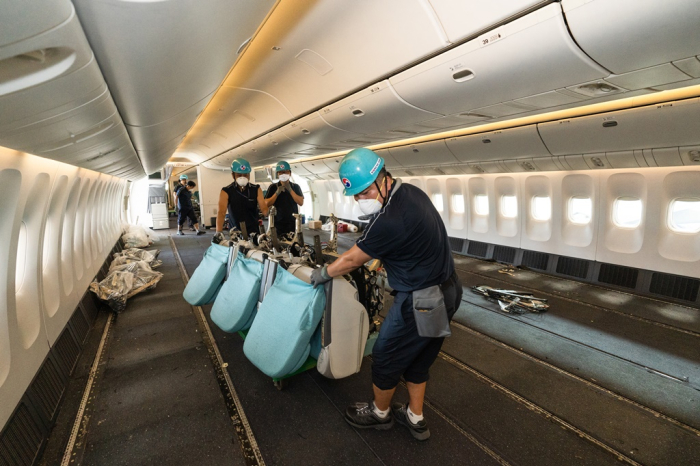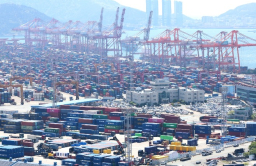Airlines
Korean Air hits milestone of 10,000 cargo-only passenger flights
Kyung-Min Kang
Aug 02, 2021 (Gmt+09:00)

Korean Air Lines Co. (KAL) hit a milestone of having operated 10,000 cargo-only passenger flights as of Aug. 1, as the country’s top carrier goes for broke to secure profit in the COVID-19 era and cash in on the recent shortage of shipping containers.
Korean Air launched these cargo-only flights on its Incheon-Ho Chi Minh route in March 2020 after the COVID-19 pandemic crippled international travel. According to a company statement on Aug. 2, the airline currently operates more than 800 cargo-only passenger flights a month, sharply up from mere 38 in March of last year. It transported a total of 400,000 tons on 65 routes to North America, Europe, Southeast Asia as well as neighboring China and Japan.
Demand for such flights increased as domestic consignors suffered amid a recent shortage of shipping containers and soaring freight rates. Korean Air’s cargo volume using the transformed passenger aircraft recovered to more than 40,000 tons a month this year, close to pre-pandemic levels, from 16,000 tons per month immediately following the outbreak, according to the company.
“We expect cargo-only passenger flights to play a more vital role in the second half of the year, when the volume of import and export cargo typically increases,” said a Korean Air official.
Thanks to the cargo-only passenger flights, Korean Air has reported quarterly operating profit for four straight quarters since April-June, 2020.
The cargo-only passenger flights mainly carry pandemic relief goods such as COVID-19 diagnostic kits, protective clothing and masks. Korean Air has deployed more than 100 cargo-only aircraft to India, the country hit second-hardest by the pandemic, to deliver relief goods. It also transports pandemic-related supplies to Indonesia, Singapore, Germany and Canada.
Korean Air has increased its cargo capacity by utilizing overhead bin space, using “cargo seat bags,” a safety device that can load cargo onto passenger seats, and removing seats to enable cargo floor loading.
Write to Kyung-Min Kang at kkm1026@hankyung.com
Jongwoo Cheon edited this article.
More To Read
-
 E-commerce Coupang’s Q1 revenue up; quarterly dip signals rising competition
E-commerce Coupang’s Q1 revenue up; quarterly dip signals rising competition14 HOURS AGO
-
 Asset management Korea Investment & Securities deepens global ties with 2nd IR in New York
Asset management Korea Investment & Securities deepens global ties with 2nd IR in New York16 HOURS AGO
-
 Korean chipmakers South Korea asks US for tailored approach to chip tariffs
Korean chipmakers South Korea asks US for tailored approach to chip tariffs17 HOURS AGO
-
 Business & Politics S.Korea confident of winning Czech nuclear plant deal despite court ruling
Business & Politics S.Korea confident of winning Czech nuclear plant deal despite court ruling18 HOURS AGO
-
Beauty & Cosmetics Seoul-backed K-beauty brands set to make global mark
20 HOURS AGO